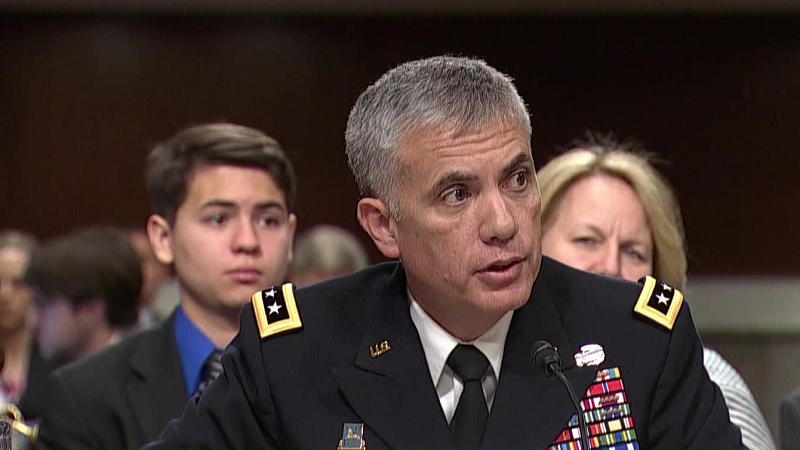
Two members of the House Armed Services Committee said at a hearing on Wednesday they support continuation of the “dual-hat” command structure which finds Gen. Paul Nakasone heading both U.S. Cyber Command and the National Security Agency.
Testifying at the hearing of the committee’s Intelligence and Emerging Threats and Capabilities Subcommittee, Nakasone continued to play it close to the vest on what course of action he has recommended for the command structure.
The general reiterated that he completed an assessment of whether or not the command structure should continue on a unified or separate basis, but gave no hint as to the conclusions of that effort. He said the matter was classified, and added that the final decisions rests “not with me.” Nakasone also said a published report saying he had recommended splitting the command by 2020 was “not accurate.”
“I don’t see how you can have them separate,” said Rep. Don Bacon, R-Neb., a retired U.S. Air Force General, at the hearing regarding the dual-hat structure. “From a cybersecurity perspective, it’s a symbiotic relationship with NSA,” he said of Cyber Command.
Rep. Jim Langevin, D-R.I., chairman of the subcommittee, said, “I believe it would be premature to split these organizations in the immediate future.” The current command structure, he said, is “quite unique” and “allows better synchronization of cyberspace operations.”
He added, “We will never again see modern warfare without a cyber component,” and pledged that the subcommittee’s interest in the matter “will remain an urgent priority.”
The chairman groused, however, that in the past Congress has requested documents relevant to its oversight function of Cyber Command and cyberspace operations, but has not gotten them.
“This includes recent guidance pertaining to operations in cyberspace,” he said, continuing, “Such documents are imperative to creating a congressional framework for oversight. Withholding these critical documents from Congress impacts our ability to appropriately support the command and may have far reaching consequences in the National Defense Authorization Act [NDAA].”
Rep. Elise Stefanik, R-N.Y., ranking member of the subcommittee, noted the strides that Cyber Command made in the past year, but warned that “the road to cyber readiness remains long.”
She also warned that unless the Defense Department makes more progress in modernizing its IT capabilities, “we will continue along with one hand tied behind our back.” Rep. Stefanik added that her enthusiasm for more advanced technologies including artificial intelligence (AI), 5G wireless service, high-performance computing, and quantum computing was “dampened” by the thought of “outdated and vulnerable infrastructure.”
“As we build the NDAA for 2020, IT modernization, cybersecurity, and information security are prerequisites to information warfare,” she said, adding “the department can and must do better in this area.”
In this testimony to the subcommittee, Gen. Nakasone said Cyber Command was “well resourced” but also had a long way to go. “We see 2019 as a year of opportunity,” he said, adding, “we have much work ahead of us as Cyber Command matures.”
